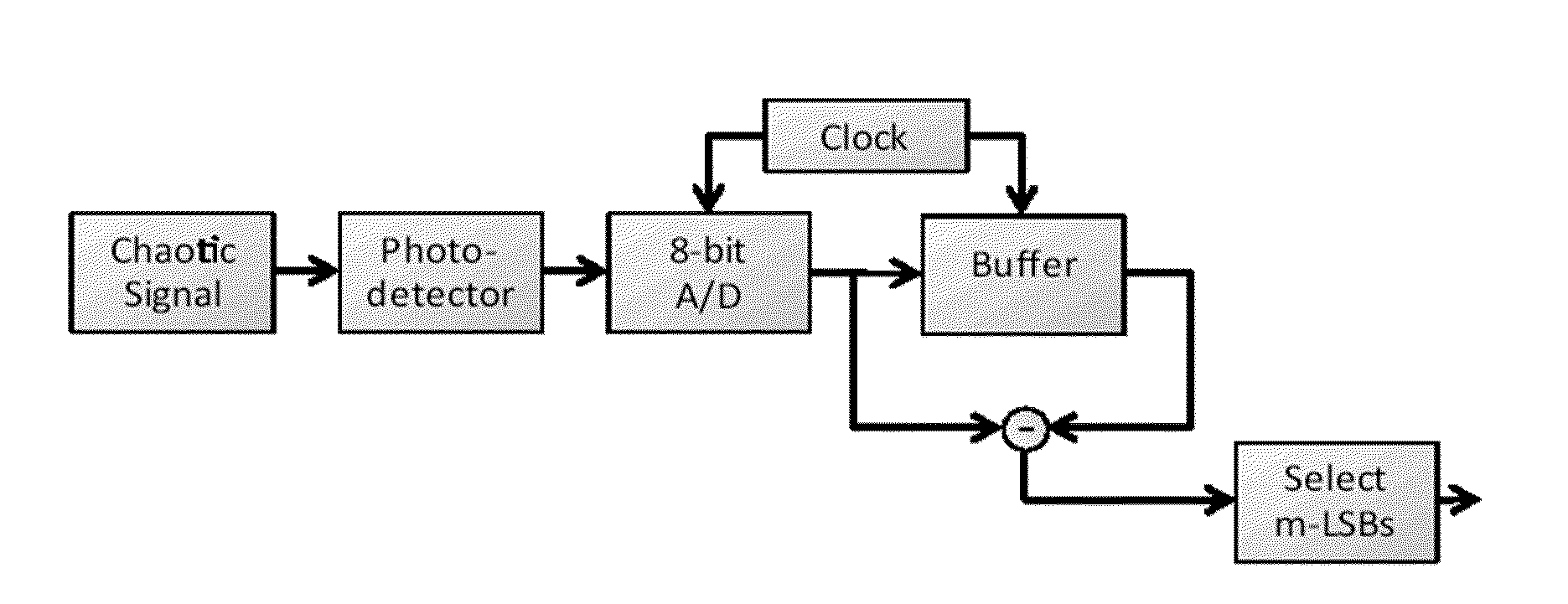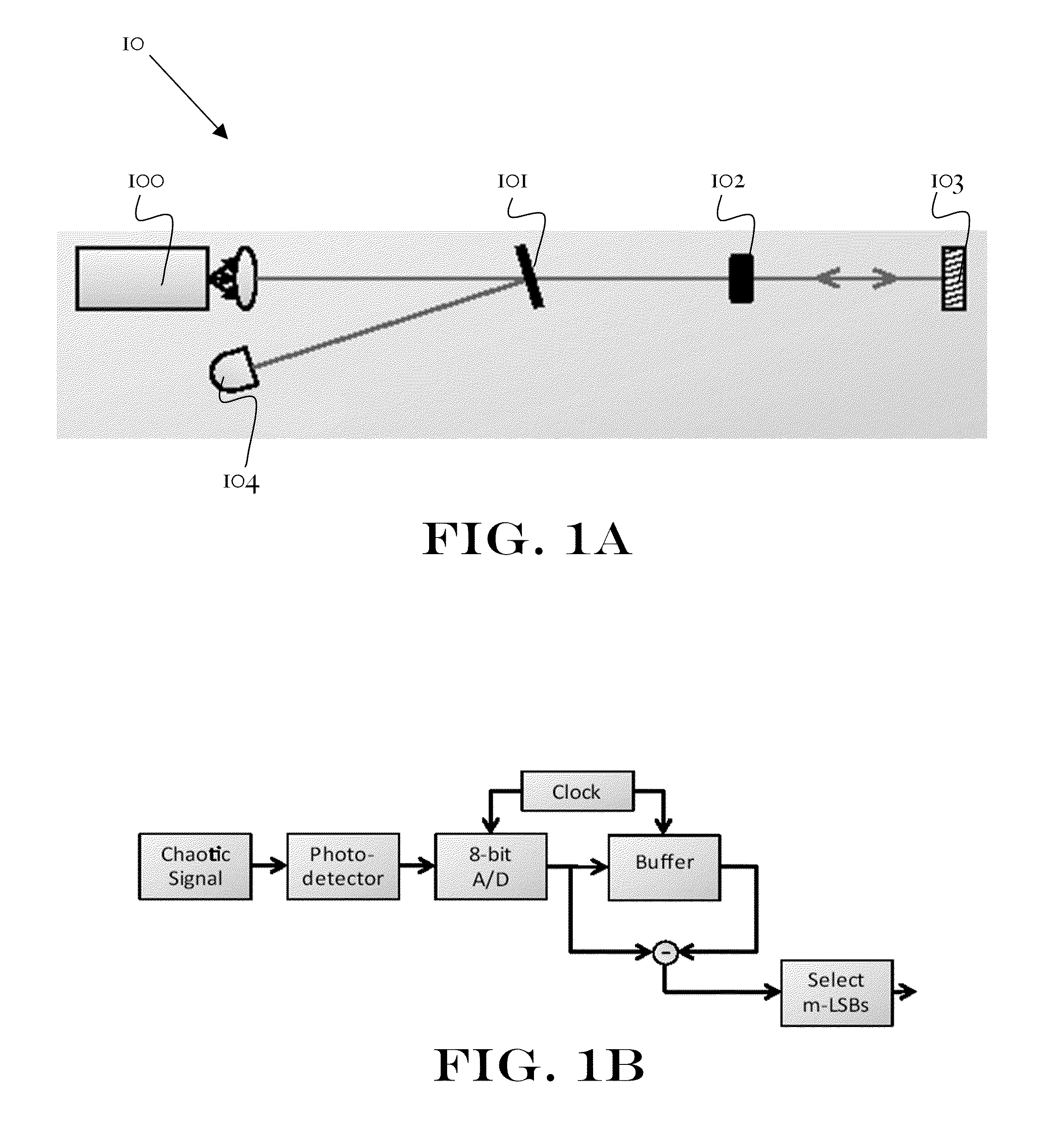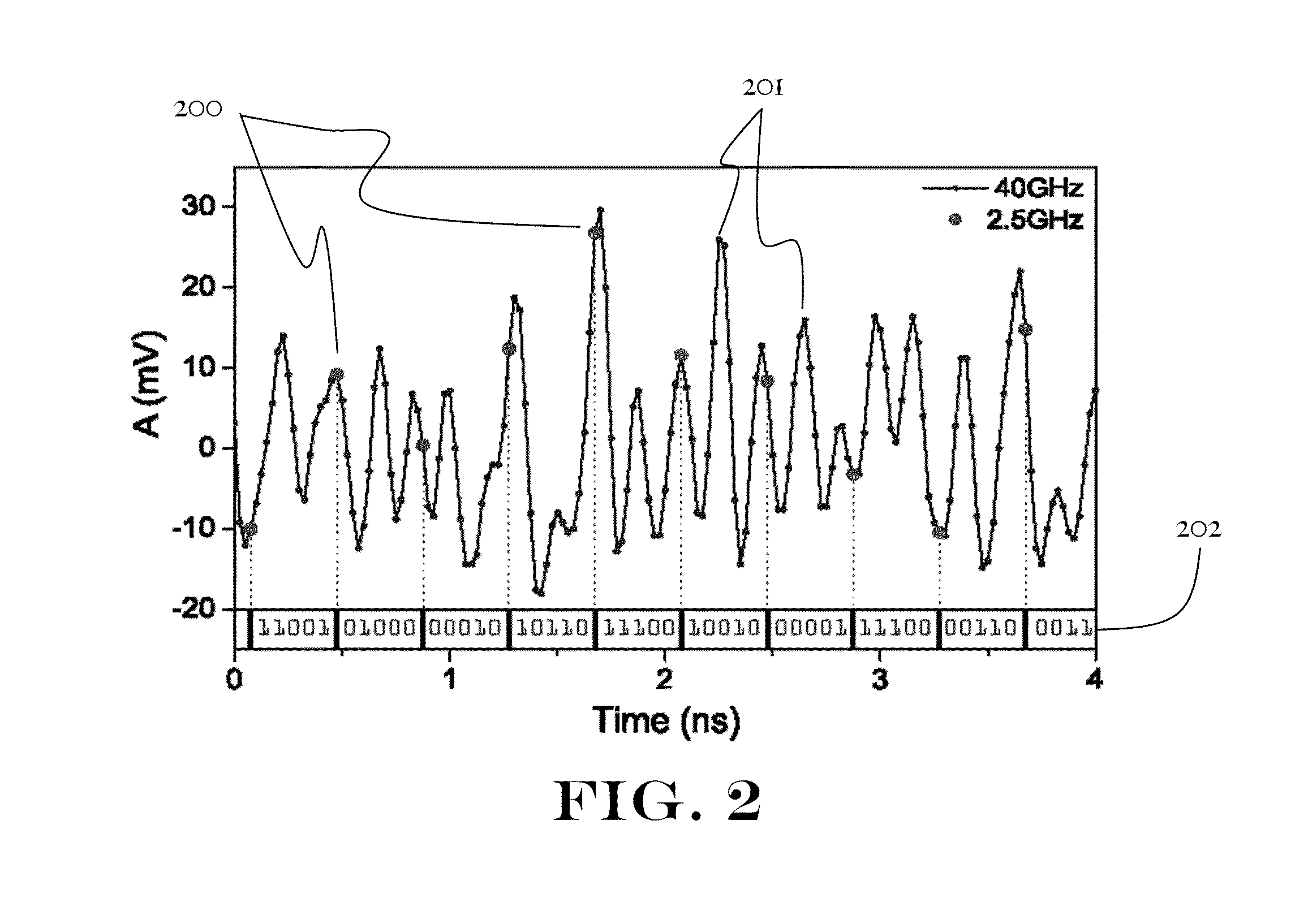High-Speed Random Number Generator
a random number generator and high-speed technology, applied in the direction of instruments, computing, electric digital data processing, etc., can solve the problem of chaotic laser behavior
- Summary
- Abstract
- Description
- Claims
- Application Information
AI Technical Summary
Benefits of technology
Problems solved by technology
Method used
Image
Examples
example 1
[0080]An RNG was constructed using a Lasermate Model LD-660-50A semiconductor laser (wavelength 656 nm, threshold current 42 mA), a Hamamatsu model G4176-03 photodetector (risetime 30 ps), a Picosecond model 5542 bias-tee (risetime 7 ps), and a Tektronix model TDS-6124C digital oscilloscope (Bandwidth 12 GHz, maximum sampling rate 40 GS / s). The laser was operated at a laser injection current of 65 mA and an operating temperature of 19.60° C. The reflector was placed such that the external cavity round trip time was 12.225 ns.
[0081]A bit sequence was obtained using the first derivative of the chaotic laser intensity fluctuations using m=5 LSBs at a sampling rate of 2.5 GHz, yielding a random bit generation rate of 12.5 Gbits / s. Statistical tests according to the NIST Special Publication 800-22 statistical test suite for 1000 sequences, each of 1 Mbit length, are summarized in Table 1. For these sequences, “success” at the 0.01 significance level corresponds to a P-value >0.0001 and a...
example 2
[0083]The chaotic intensity fluctuations of semiconductor lasers with external feedback exhibit periodic behavior of the chaos with a period equal to the time delay of the feedback propagation time τ. Reference is now made to FIG. 9, which shows the autocorrelation calculated for the laser intensity prior to performing the first derivative and bit extraction for a sequence of length N=50 000 data points. The correlation revives at integer multiples of τ, and slowly decreases as N increases, as shown in FIG. 9A. After performing the derivative and bit extraction, thus obtaining a bit sequence of 25 000 points, the periodicity in τ is eliminated, as shown in the random bit sequence autocorrelation calculation shown in FIG. 9B. As shown in the inset in FIG. 9B, a closer look at the autocorrelation near zero time delay shows that the correlation drops to the noise level in a time less than the time delay between two adjacent bits.
example 3
[0084]An RNG was constructed using a Lasermate Model LD-660-50A semiconductor laser (wavelength 656 nm, threshold current 42 mA), a Hamamatsu model G4176-03 photodetector (risetime 30 ps), a Picosecond model 5542 bias-tee (risetime 7 ps), and a Tektronix model TDS-6124C digital oscilloscope (Bandwidth 12 GHz, maximum sampling rate 40 GS / s). The laser was operated at a laser injection current of 65 mA and an operating temperature of 19.60° C. The reflector was placed such that the external cavity round trip time was 10 ns (i.e. commensurate with the clock time).
[0085]A bit sequence was obtained using the fourth derivative of the chaotic laser intensity fluctuations using m=5 LSBs at a sampling rate of 20 GHz, yielding a random bit generation rate of 100 Gbits / s. Statistical results using the NIST Special publication 800-22 statistical test suite are given in Table 3 for 1000 bit sequences, each of which was 1 Mbit in length. “Success” is defined as in example 1. For tests that produc...
PUM
 Login to View More
Login to View More Abstract
Description
Claims
Application Information
 Login to View More
Login to View More - R&D
- Intellectual Property
- Life Sciences
- Materials
- Tech Scout
- Unparalleled Data Quality
- Higher Quality Content
- 60% Fewer Hallucinations
Browse by: Latest US Patents, China's latest patents, Technical Efficacy Thesaurus, Application Domain, Technology Topic, Popular Technical Reports.
© 2025 PatSnap. All rights reserved.Legal|Privacy policy|Modern Slavery Act Transparency Statement|Sitemap|About US| Contact US: help@patsnap.com



